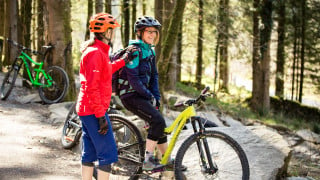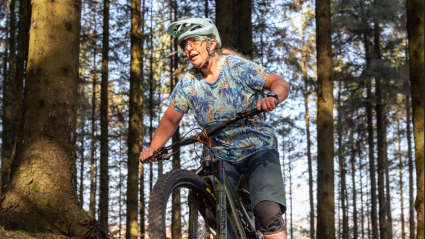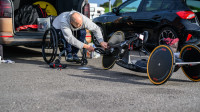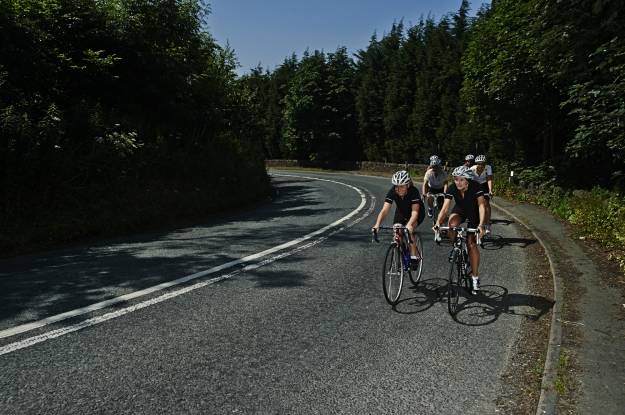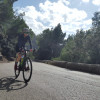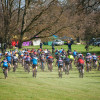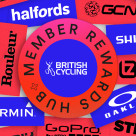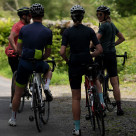Knowledge Level: Intermediate
Cycling is an incredibly rewarding sport but it can also be unforgiving when in most cases, only one of the people entered in a race or event can stand on the top step of the podium. The path to personal success (and potentially winning) is an exciting and very enriching one though, as there is always room to improve.
Process goals are all about breaking down the big picture to isolate areas for marginal gain. They relate to areas you need to develop (though these may be things you might be tempted to avoid), plus setting your own tailored achievements to incrementally improve.
In this article we’ve looked at three types of riding with some inspiration to get you started, but first we’d encourage you to sit down with a cuppa and think back to some of your recent rides or races.

Focus on your riding
Picture yourself on the club run, prepping for an uplift day, waiting on a start line or out testing lines. Now start to list the things that have impacted your performance, caused pre-event stress, knocked your confidence or made you question the way you ride.
Here are a few examples (with a bit of context about how they relate):
- I’m not confident to remove layers or eat on the bike And therefore don’t feel comfortable joining the club run because I don’t want to slow the group down or have to ask to stop.
- I never have time to warm up properly before a race So arrive to the start line stressed and feeling as though I’m going to get dropped if the intensity is high straight away.
- I love riding at trail centres, but don’t want to step up a trail grade As I’m not used to drop-offs and I don’t want to get caught out or risk crashing.
- I don’t know how to fix a puncture And it’s a constant worry in the back of my mind, despite carrying all of the right kit.
- I can only clip out on one side And know that this might not be safe in some situations – plus it’s not great for cyclo-cross racing.
Explore ways to improve
Now you have a list, it’s time to turn those thoughts into actions and come up with a plan. Have a read of the ideas below, plus we’ve linked to resources from our Insight Zone that might be helpful.
You may also find that speaking to other riders to hear about their experiences will help, and we’d really recommend reaching out to a coach, mountain bike leader or community ride leader if you need some technical and moral support to stick to your plan.
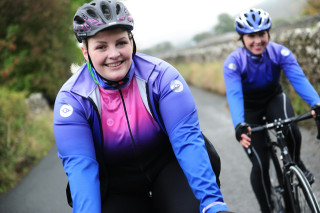
If you ride for fun and fitness
Wear suitable kit and consider a bike fit
Being comfortable is one of the most important ways to ensure that your riding is enjoyable. Whether you suffer from back, wrist or saddle soreness – or anything else, try to tackle any niggles quickly to avoid causing further injury or having time off the bike. This might mean changing your saddle height, seeing a bike fit professional or reviewing your saddle health.
Trust a trail centre
If mountain biking is your thing, trail centres are great places to slightly push your boundaries as they are managed spaces. You can check the trail grades in advance and ask staff about the different routes and whether features are rollable (which in most cases they are, or there will be an easier line). Riding at a trail centre will also give you options to try something new on the same day, allowing you to then put those skills to use closer to home.
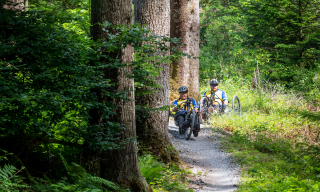
Get the skills to self-rescue
While punctures are perhaps the most common complaint, other issues may cause a ‘walk of shame’, or harder ride home. Spend some time practicing puncture repair, understanding basic fixes and buying the correct equipment to get you out of a tight spot.
Plus, remember that if you’re a Premium Member you will benefit from ‘Return to Home’ cover up to £50 if your bike is unrideable following an incident or mechanical.
If you ride events or participate in club rides
Aim to be ambidextrous
It’s so easy to settle into your riding and only use the skills your regular routes require, but playing around a little and challenging yourself will really help with bike handling. If you ride ‘clipped in’, when it’s safe try to unclip one foot and then re-engage – and progress to doing this when you come to a stop. Or spend some time working on your weak side when riding berms or off-road corners with a loose surface.
As part of their training the Great Britain Cycling Team may occasionally ride the ‘wrong’ way around the track to sharpen the senses; imagine doing this yourself, perhaps if you’ve ridden on a velodrome or race speedway.
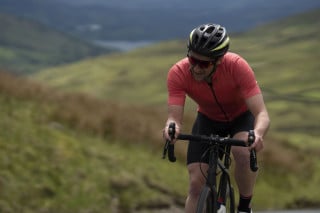
Seek out challenging terrain
An event elevation profile with steep peaks can put some riders off. In order to build confidence, add an extra hill into weekend rides, or choose a hillier way on your commute. Over time, you will notice that the climbs will start to feel easier and you may even develop a new-found love for tackling steep inclines!
Make sure you’re happy hydrating
When you’re mid-flow or on a fast chain gang, grabbing a drink might be the last thing on your mind – but it’s so important. Set yourself the goal of getting through a set amount, like a full bottle, during your ride. And if you might be moving onto racing, taking a bottle will be something you’ll need to practice with your support team. Be sure to nail this before attempting at an event.

If you are competing in races
Perfect your positioning
Rather than focusing on your end result, instead set the smaller goal of holding position in the bunch or racing for a mid-race prime (if there is one). In BMX or speedway, you might identify the position you want to be in after a set point in the race and work to get there. Process goals like this are great if you participate in a regular race series, where you could identify particular races to sharpen your skills versus others where you may want to attack (which is of course a skill in its own right!).
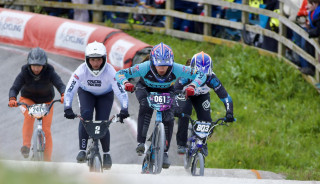
Make incremental efforts
Maybe last time you raced on a course, you got dropped within the first lap. Instead of expecting yourself to keep up for the entire race this time, try having the goal of staying in the bunch for longer than you did last time, even if it is only for a few extra minutes. Or if you chose to avoid the A-line in your previous mountain bike race, set yourself the goal of practising your skills in training and testing them on the practice lap(s) and then give the A-line a go if you feel up to it.
Get to the start line feeling ready
The night before a race or event, it’s a good idea to literally write out your timing plan for the next morning. From the moment you wake up, you can plan out your breakfast, packing the car, signing on and warm-up timings. We’ve got a 20-minute session that will get you start line-ready.
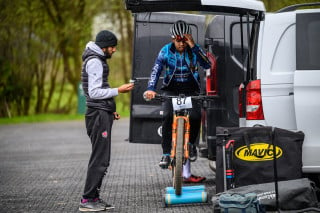
Check the race handbook for details of where you might be able to warm up, plus have a think about whether a static warm-up on rollers or a turbo could be something to consider. Riding rollers opens up a whole new range of bike control skills that will really benefit your handling.
We hope that reading this has given you some ideas for process goals you could set yourself. Just remember to go back and review those goals from time to time, proudly ticking off those you have addressed and boosting your motivation by adding more.

